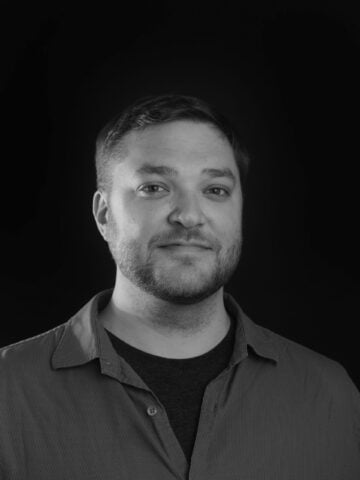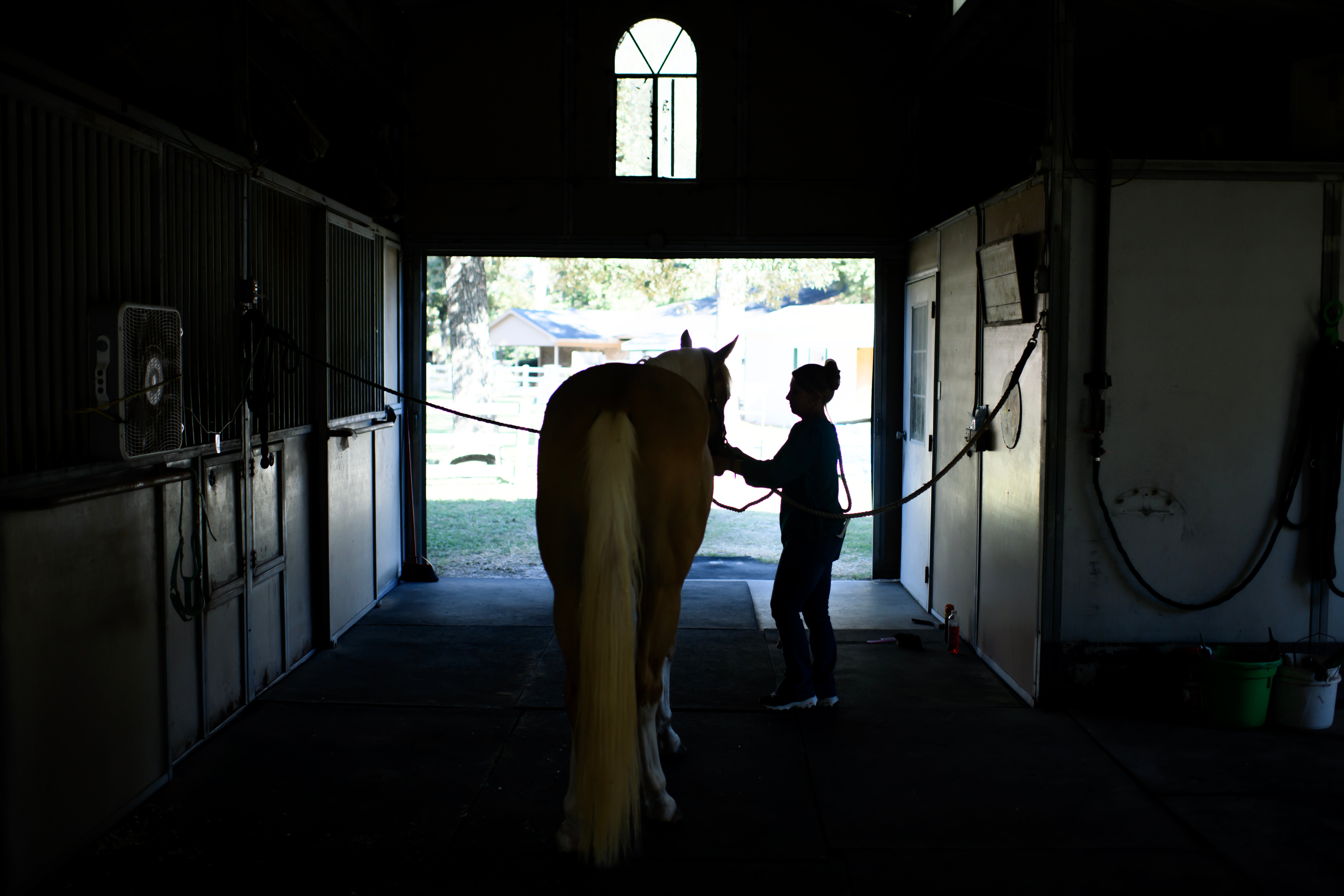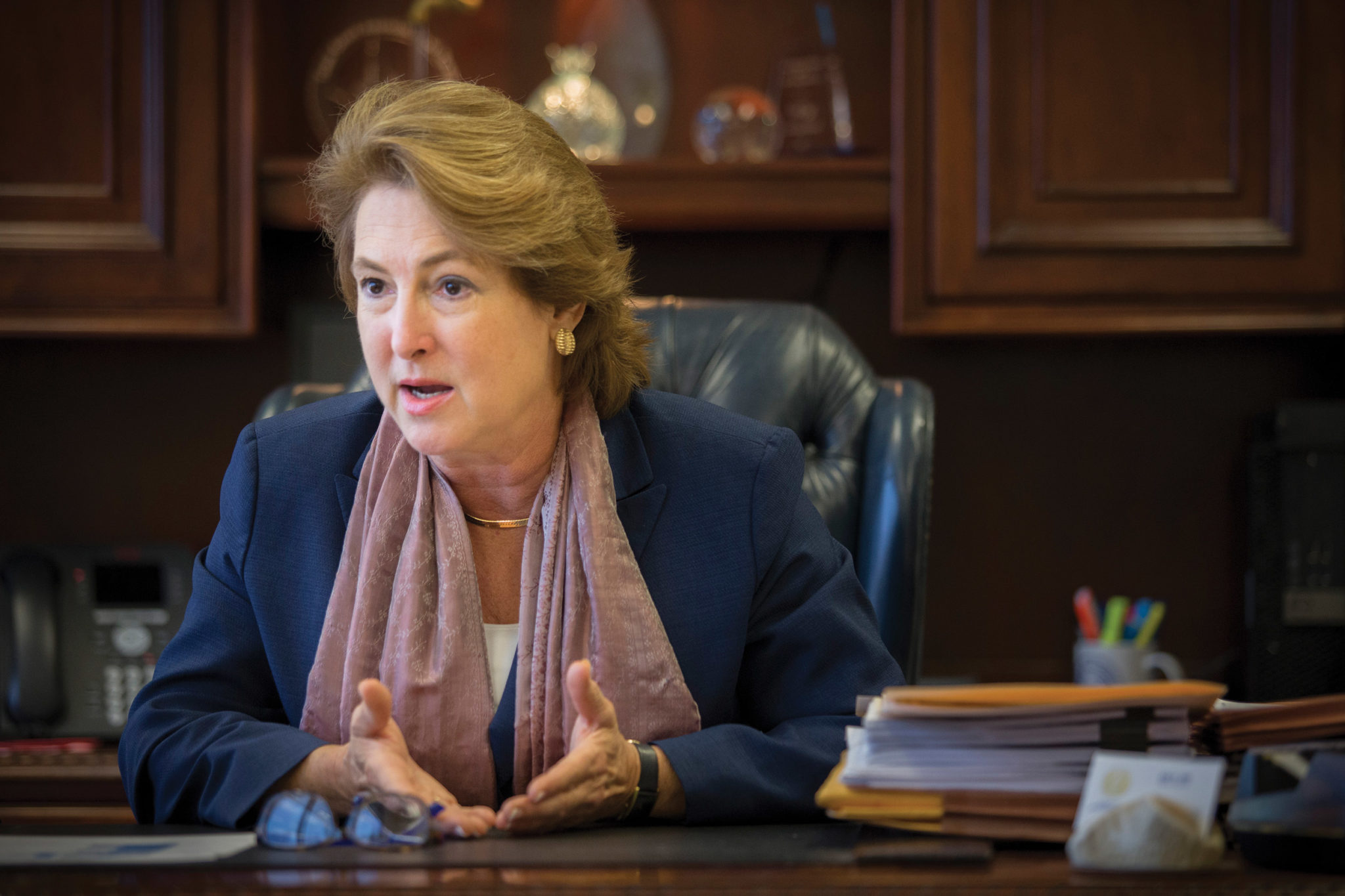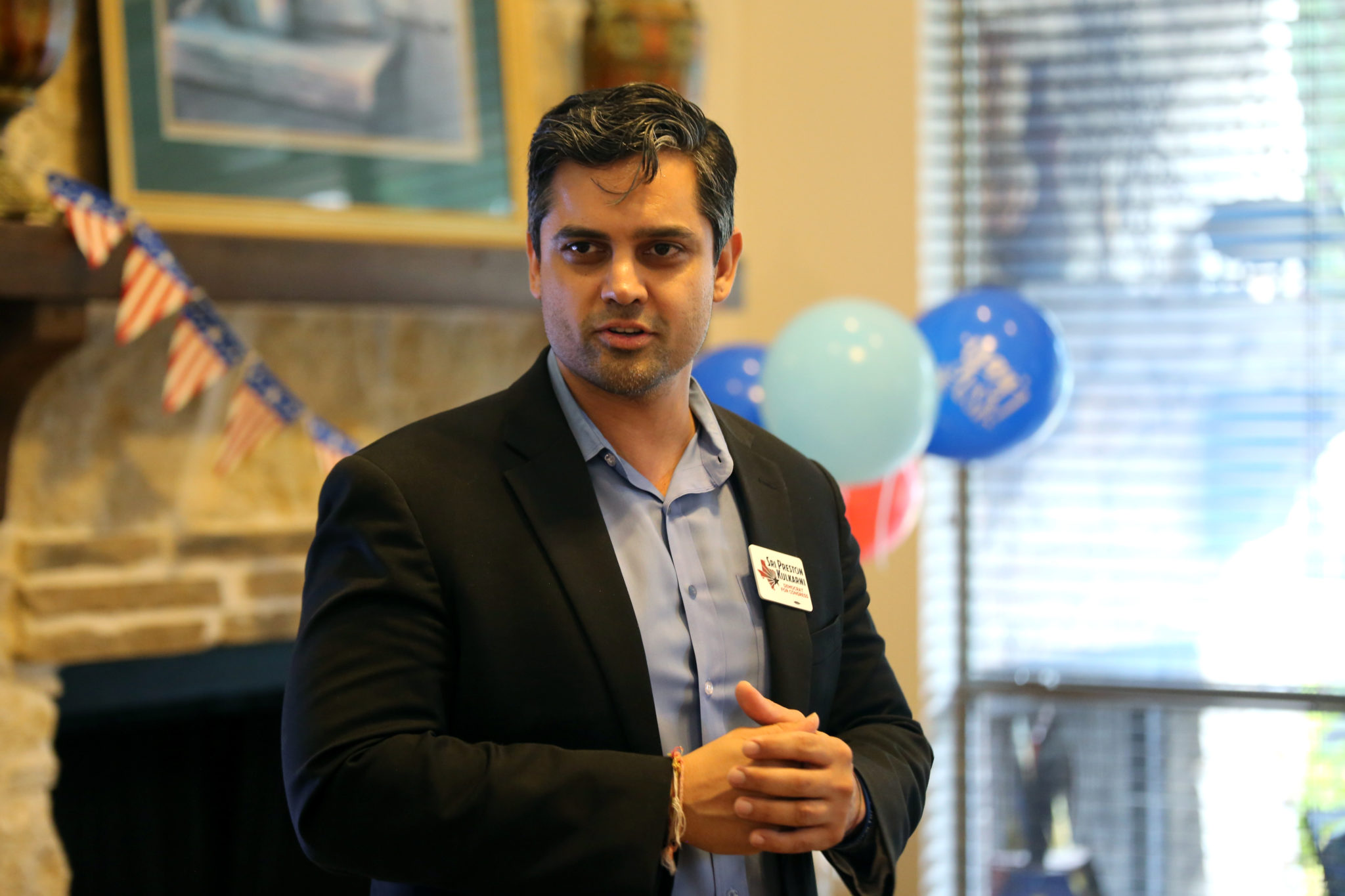
Sri Kulkarni is Changing the Way Democrats Talk to Asian Americans
Asian voters could hold the key to Democratic gains in the diversifying purple suburbs of Texas. Houston-area Republican Congressman Pete Olson’s challenger is betting on it.
–
by Justin Miller
September 5, 2018
Sugar Land has all the trappings of American suburbia: upscale outdoor shopping centers, immaculate oak tree-lined streets, country clubs and sprawling subdivisions. But it also has something that is becoming more typically associated with suburbia: religious and ethnic diversity. Driving north on a short stretch of Brand Lane, which sits along the border between Sugar Land and Stafford, Texas, you first see the pristine Shri Swaminarayan Mandir Hindu temple, its white marble gleaming in the August sun. Next, an Anglo church, followed soon by a South Indian church. And then, the bustling Masjid Al-Sabireen Islamic Center, where a constant stream of cars, pickup trucks and minivans pull into an overflowing parking lot for Friday afternoon prayer.
Finally, the street bleeds into Highway 90A, which also happens to be along the northeastern edge of the 22nd Congressional District, a gerrymandered blob that encompasses much of Houston’s expansive suburbia to the south and west, including Sugar Land, Pearland and Katy. Home to vibrant Indian, Chinese, Vietnamese, Pakistani, Filipino and other Asian immigrant communities, the district has the biggest concentration of voting-eligible Asian Americans in all of Texas.
Despite its diversity, the seat has been a Republican stronghold going back to the days when it was held by former U.S. House Speaker Tom Delay. In 2016, Donald Trump won the district by 8 percentage points while the incumbent tea-party Republican Pete Olson won re-election by nearly 20 points. On paper, this is one of those seats that looks to be immune to a Democratic wave in November.
But Sri Preston Kulkarni, who quit his post in the Trump administration last year and moved back to Texas to challenge Olson, isn’t so sure.
For years, the Texas Democratic Party has bet its future on an imminent, but never-quite-materializing demographic destiny. Eventually, the thinking goes, the rapidly growing Latino population would exercise their political muscle, turning Texas blue. But that hasn’t happened. Meanwhile, Asian Americans are another rapidly growing, low-turnout demographic in the state. As a small, relatively conservative, highly fragmented voting bloc, they’ve attracted far less attention from Democratic operatives. But Asians have undergone a massive political realignment to the left and they could hold the key to Democratic gains in the diversifying purple suburbs of Texas. At least that’s Kulkarni’s bet.
“When I first started, I was told not to bother with the Asian-American vote because they don’t turn out,” Kulkarni told the Observer. “Well, I said, maybe that’s because you’re not reaching out to them.”
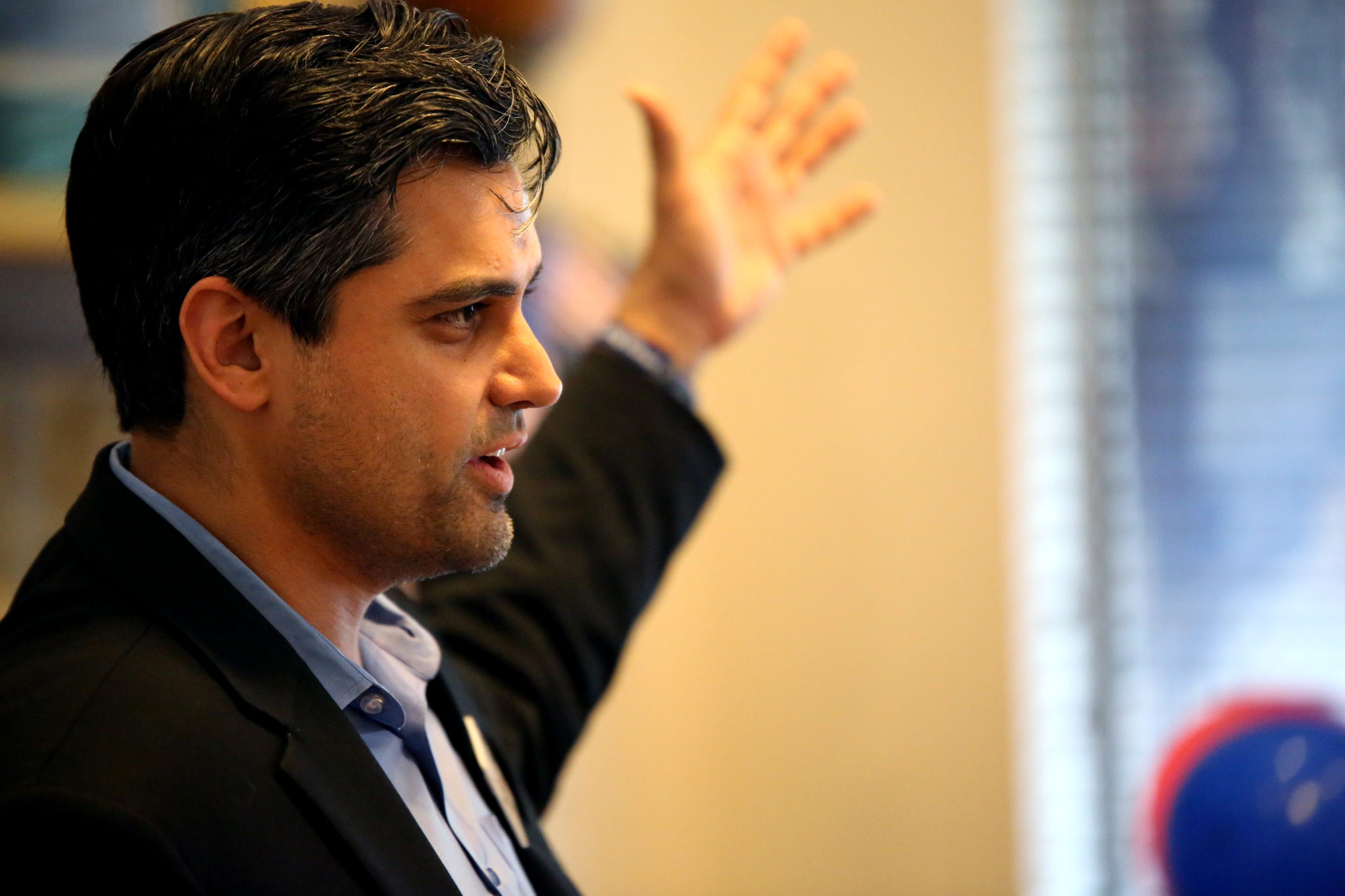
Kulkarni figures that in a district like CD 22, doubling down on Asian-American voter turnout makes more sense than the failed campaign strategies of the past. So he’s made Asian-American and Pacific-Islander (AAPI) outreach a fundamental part of his campaign and, in doing so, he’s charting a new path for how to activate a diverse and complex well of heretofore untapped Asian-American political power.
When he was growing up around Houston, there was just one Hindu temple nearby, Kulkarni recalled. These days, you can find a list of the top 10 temples in Sugar Land on Yelp. Fort Bend County is the district’s main population hub — it’s on pace to grow by 2.1 million by 2050 — and has become a beacon of Texan diversity. Asians and Pacific Islanders comprise 21 percent of the population, almost four times the national average. With black, Asian and Latino residents making up 65 percent of the population, it’s one of the most diverse counties in the country.
More and more highly educated and diverse people move to this idyllic and affluent suburb, filled with sparkling subdivisions — with names like Plantation Bend, Plantation Colony and Plantation Creek that harken back to its dark sugar plantation history — feeding into some of the best public schools in the state. And with that, the foundations of this GOP stronghold have weakened. The district saw one of the largest political swings of any congressional seat in the country during the 2016 elections, shifting Democratic by a net 17.5 percentage points from the 2012 presidential election. Clinton won Fort Bend County by more than six points in 2016 after Barack Obama had lost it by almost the same margin just four years earlier.
There are at least 165,000 Asians in the district, about 20 percent of the total population, according to U.S. Census data. And the Asian population has increased by over a third in just six years. “How do you ignore that?” Kulkarni said.
–
Kulkarni’s father emigrated from India, and his mother can trace her ancestry back to Sam Houston. Kulkarni was born in Louisiana and grew up in the Houston area. A charismatic candidate with a compelling backstory, he’s managed to tap into a surge of youth enthusiasm in the district — particularly through his involvement in the local March for Our Lives movement — while also making inroads with older Asian immigrants.
He worked for 14 years as a foreign service officer with the State Department, earned a master’s degree from Harvard’s Kennedy School and served as a foreign policy advisor for New York Senator Kirsten Gillibrand. He’s also fluent in six languages (English, Spanish, Hindi, Mandarin Chinese, Russian and Hebrew). If he wins, Kulkarni would be the first AAPI member of Congress from Texas.
Kulkarni and a small team quickly assembled an intensive outreach program to target the various sub-communities within the district’s diverse Asian-American population. With the help of hundreds of volunteers — many of them in high school and college — Kulkarni has canvassed registered AAPI voters in the district with door-knocking and phone-banking in 13 different languages. Indians are the largest Asian community in the district — more than a third of the AAPI population — and the campaign has volunteers who speak the major Indian languages, including Hindi, Tamil, Urdu, Telugu, Marathi and Gujarati.
“When I first started, I was told not to bother with the Asian-American vote because they don’t turn out.”
Padma Srinivasam, a longtime Sugar Land resident who emigrated from South India, heard about Kulkarni’s campaign at one of Beto O’Rourke’s town halls in January and immediately joined his volunteer team. A native Tamil speaker, she is charged with calling many of the district’s Tamilians and introducing them to Kulkarni. People are more receptive, she says, not only when she pronounces their name properly but can switch back and forth between languages. “Language is not a barrier here for us,” Srinivasam said. “That’s how we do it, we reach out to all the people.”
Ashok Danda, a volunteer from Katy, helps coordinate outreach to the district’s Telugu speakers, including through a mass Whatsapp chat. “We all speak English, but when you add that little touch it really has an effect,” Danda said. He calls his friends, they call theirs, and soon, Danda is holding a fundraiser for 50 Telugu speakers in his living room.
Volunteers also speak Mandarin Chinese and Vietnamese, which are, respectively, two other widely spoken languagesin the district. Kulkarni has made the rounds, too, in the district’s many religious centers — from the Ismaili jamatkhanas and Malayalee churches to the Hindu temples and Sikh gurdwaras — and reached out to younger Asians in professional groups like the South Asian Bar Association and the American Association of Physicians of Indian Origin.
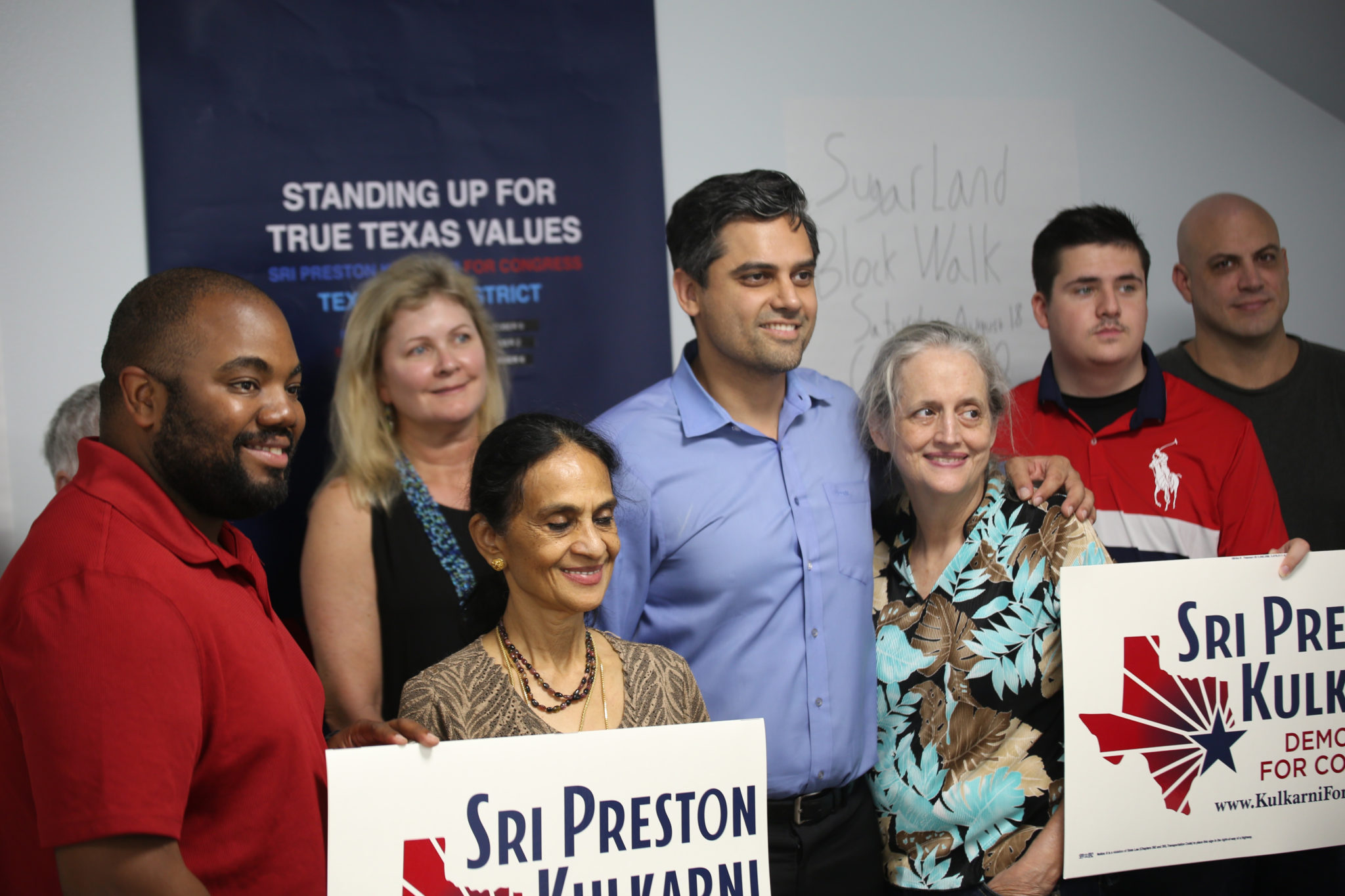
“The diversity within the AAPI community necessitates what Sri’s campaign is doing. They’re just being super smart about it,” said Deborah Chen, the civic engagement programs director for the Organization of Chinese Americans-Greater Houston, a group dedicated to nonpartisan AAPI voter outreach. “That’s the inherent challenge for the AAPI community: It’s an American term. There’s no such thing as an Asian in Asia.”
Put simply, there’s no single way to communicate with “Asian” voters.
Kulkarni’s micro-level efforts paid off during the primary. He led a five-way race with 30 percent of the vote and then won the runoff with more than 60 percent. Kulkarni says his outreach drove up Asian voter turnout and in doing so almost completely flipped traditional partisan leanings. Of course, part of that might be attributed to the larger Trump effect, but the Kulkarni campaign’s internal analysis shows that while Asians in the district voted Republican by a 3-to-1 margin in 2014, Asians voted Democratic by a more than 2-to-1 margin in the 2018 primaries.
“It is hard work. People think all you have to do is show up with an Indian name,” Kulkarni said. “Trust me, they’re wrong. There’s a lot of people who have tried that and failed. There’s a lot of legwork involved, but the upward potential is huge.”
–
Ali Hasanali is a young attorney, second-generation Indian-American and volunteer for Kulkarni’s campaign. He grew up in Sugar Land and has seen firsthand the area’s rapid transformations, demographically and politically. And he’s become something of a savant when it comes to the political intricacies of the district, particularly in Fort Bend County, which makes up nearly 80 percent of the district’s population.
In early August, Hasanali showed me around the district, rattling off the precinct numbers, the names of the master-planned communities, average home prices, average household incomes and ethnic breakdowns. Along the way, he points out the innumerable stores and restaurants, including a burger and biryani joint, owned by Asian immigrants. “If any of these various ethnicities vote at more than the traditional 10 to 20 percent rate and get into 40 to 50, sometimes even 60 to 70 [percent], then that’s dangerous for Pete Olson,” Hasanali said.
That would, of course, be an unprecedented uptick. While 79 percent of Asian-American voters nationally voted for Hillary Clinton, according to 2016 exit polling, only 59 percent did so in Texas. But Hasanali is convinced that there are a lot of Asians who have starting paying attention to the race because of Kulkarni’s background, heritage and outreach. And he thinks Asians who voted for Olson in the past will switch this time around.
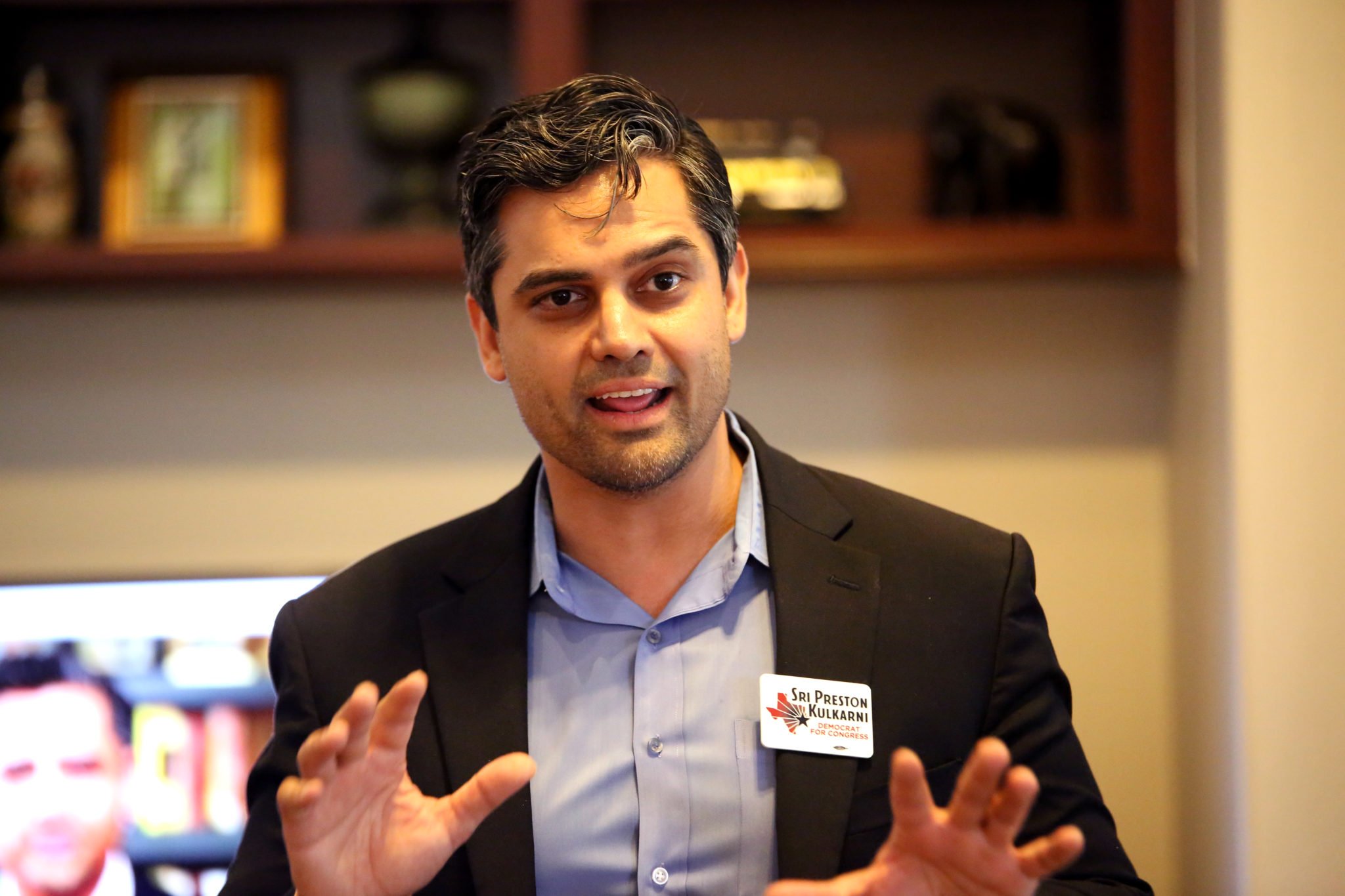
“Asian Americans nationally are probably leaning Democratic, but a reality of that, as immigrants, you took on the affiliation of the party that was already in power where you were,” he said. “So my parents’ generation who immigrated here probably lean more conservative than the generation who grew up here. … But all of their kids are Democratic.”
Despite running in an affluent Republican district, Kulkarni has embraced a progressive platform, including support for a single-payer healthcare system, tax fairness and a living wage, criminal justice reform and gun control. When it comes to courting traditionally Republican voters in high-income Asian communities, Kulkarni has often found that they’re just fiscal conservatives, not diehard partisans. “When you talk to them about abortion, for the vast majority of them that’s not a big issue for them at all. … They care about education first and foremost.”
The question now is whether he can scale up this outreach — which will require more money and more volunteers — by November. There’s evidence that he’s gaining momentum. He was one of seven Texas Democratic congressional challengers to outraise their GOP opponents in the latest reporting period. Olson’s campaign is largely propped up with corporate PAC money, including Koch Industries.
“It is hard work. People think all you have to do is show up with an Indian name.”
A top House race analyst recently shifted the district from firmly “Safe Republican” to “Likely Republican,” recognizing that Kulkarni’s unusual campaign is perhaps more of a threat to Olson than it looked on paper.
But Sujeeth Draksharam, a Republican activist in Fort Bend and an Olson supporter, isn’t so sure that Kulkarni’s bid to consolidate the Asian vote will work. “If you’re here in the U.S., you’re an American first,” Draksharam said. “We can’t be subdivided. We have that back in India.” He says that some South Asian voters might flip for Kulkarni, but not enough to win. “They are values-based and vote on what you bring to the table and what is your past. Indians don’t do bloc voting.”
But even if he doesn’t win, if he manages to significantly shave down the margin by maximizing Asian turnout, Kulkarni will have set a model for other campaigns in Texas and around the country. “This district, it’s like an IPO,” Kulkarni said. That is, there’s a huge upside for any investment in AAPI organizing here — something he’s trying to convince the national and state Democratic parties to do. “Because if you flip that community, everything changes.”
